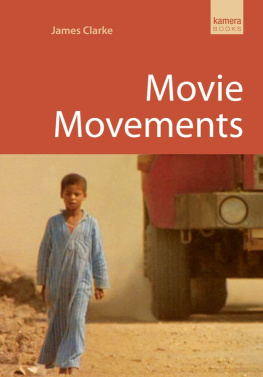0.1.
1.1.
1.2.
1.3b.
1.4.
1.5.
1.6.
1.7.
1.8.
2.1.
2.2.
2.3.
2.4.
2.5.
2.6.
2.7.
2.8.
2.9.
3.1.
3.2.
3.3.
3.4.
4.1.
4.2.
4.3. and
4.4.
4.5.
4.6.
4.7.
4.8.
4.9.
4.10.
5.1.
5.2.
5.3.
5.4.
5.5.
5.6.
5.7.
5.8.
Acknowledgments
Although I did not know it then, my research for this book began in 2007 when I started working as a postdoctoral researcher on a project on colonial film. For three years I watched countless films at the British Film Institute and Imperial War Museumfilms on hookworm, newsreels from India, missionary films, war rushes from Burma, educational and instructional shorts for audiences in Britain and the British coloniesand wrote on more than two hundred of these films for the projects website (www.colonialfilm.org.uk). I would like to acknowledge and thank the Arts and Humanities Research Council who funded the project.
As well as gaining access to a (largely) fascinating collection of films and materials through the project, I had the opportunity to workshop ideas, and to work with and learn from some fantastic people. I am particularly indebted to the project directors, Colin MacCabe and Lee Grieveson, an inspiring and hugely entertaining double act, who have continued to support my work, challenge my ideas, and make me laugh. Lees influence runs throughout the work, as an astute reader, editor, advisor, and distraction. Most of all, he has been a good friend.
The project would not have been as interesting or enjoyable without my fellow postdoctoral researchers, Francis Gooding, Richard Osborne, and Annamaria Motrescu, all of whom helped me in various ways. I am very grateful for the generous support and continued encouragement of Emma Sandon, who advised on the project. Staff at the BFI and IWM were unfailingly helpful, even when they had plenty of other things to be doing (aside from trying to find me desk space or arrange viewings). Even after the project finished, they have continued to answer questions, provide materials (including digitizing the entire run of the Colonial Film Units in-house journal, Colonial Cinema, which helped my research immeasurably), and generally go above and beyond. I cannot name them all here, but special thanks to Patrick Russell and Nigel Algar at the BFI and to Kay Gladstone at IWM. I have learned a huge amount from them all. It was always an absolute pleasure to work with Kay at the IWM, while Patricks sharp insights on all things nonfiction have continued to shape the book.
The book is reliant on extensive archival research. Away from the BFI and IWM, I am hugely grateful to James Kearney and the AP Archive for generously providing me with access to many additional films. Thanks also to the brilliant Karl Magee at the Grierson Archive at University of Stirling, to the Bristol Museum and BECTU for supplying interview materials, and to those at the British Library, National Library of Scotland, SOAS, Institute of Commonwealth Studies, and National Archives who have helped me on-site with my (many) requests. I am also grateful to those who have answered research questions from a distance, such as Jonathan Stubbs with information on Cyprus and Liam Buckley on the Gambia. Many other archives have provided information and materials remotely, including Rosa Wong Sang at the National Archives of Trinidad and Tobago and Stephanie Schembri at the National Archives of Malta.
The research and ideas within the book have accumulated over many years, through conferences, email exchanges, and discussions. My colleagues at St. Andrews all get top marks, but I am especially grateful to those friends who have occupied the office next to me over the past seven yearsJosh Yumibe, Brian Jacobson, and Lucy Donaldsonfor their friendship, good humor, and willingness to listen to my ideas without glazing over. Brian has also read various parts of this work and always asks the right questions. I am also very grateful to Karen Drysdale, Mike Arrowsmith, Michael Cowan, Leshu Torchin, and Robert Burgoyne, who have helped in various ways, and to our brilliant students at St. Andrews. Thanks are also due to those who have invited me to speak at conferences around the world, including Ravi Vasudevan, Madhava Prasad, Vinzenz Hediger, and Ian Aitken. Among the many friends and colleagues who have patiently listened to my work or generously shared materials, I would like to thank Scott Anthony, Martin Stollery, James Burns, Jae Maingard, John Izod, and Jennifer Blaylock. I would also like to acknowledge the pioneering work of Rosaleen Smyth, David Giltrow, and Peggy Giltrow, who have not only undertaken superb work on the Colonial Film Unit but also helped to ensure that many of the films and materials are available to researchers today.
This book would not have been written without the generous support of the Leverhulme Trust, and indeed the book was largely written during my research fellowship. During the fellowship, I traveled to Ghana and Jamaica and am enormously grateful to all who helped me on these trips. I spent a very productive period at the Ghana National Archives and at the Information Services Department, where I also located some of the images for the book. In Jamaica, I carried out research in the National Archives, the National Library, and at the University of the West Indies, working through government reports, unpublished autobiographies, and a fascinating batch of films produced by the Jamaica Film Unit in the 1950s. Problems with the headphones meant that I had to play the final film through loudspeakers (twice) for all in the library to hearnot ideal, as the film happened to be an all-too-detailed instructional film on the perils of venereal disease. To those in the library that day, I apologize and present this book by way of an explanation. I am extremely grateful to all who helped me during these trips, in particular Rachel Moseley-Wood and Suzanne Francis-Brown.












